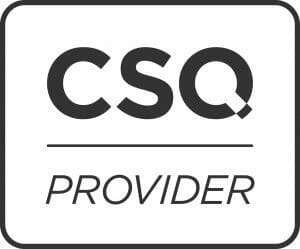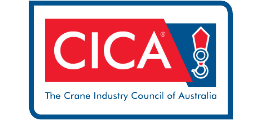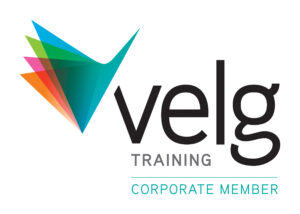About this Course
Course Description:
This unit (Basic Scaffolding Course) specifies the outcomes required to erect, alter and dismantle scaffolding at the basic level, consisting of scaffolding work connected with the operation or use of modular or pre-fabricated scaffolds, cantilevered materials hoists with a maximum working load of 500kg, ropes and gin wheels, safety nets and static lines, and bracket scaffolds (tank and formwork) for licensing purposes.
If a participant requires a reassessment for a High-Risk Work Licence an additional $250.00 + GST reassessment fee will apply.
Location:
Public courses run at Kallibr Training (RTO 32365) locations in Brisbane and Sydney.
Private training can be organised and conducted onsite if the following training and assessment requirements are met:
- a modular scaffold of a minimum of three bays with a return (tied in), ladder and stair access, bay extension platform (hop-up brackets) incorporating a safety screen, and a platform height of more than 4 m
- a bracket scaffold (including tank, formwork, and top-plate hung bracket)
- a mobile scaffold of above 4 m height
- a gin wheel
- a cantilever materials hoist with a maximum working load of 500 kg
- a safety net and static line.
Course Outline
- Available at Salisbury QLD and Ingleburn NSW
- Onsite scaffolding training available
- Nationally recognised
- Group discounts available
- Online booking available
Course Availability & Pricing
Please see our public course dates below. If there are no dates available or you would like to arrange a private course at your site or ours, then please select the ‘Private courses’ button.
Course Outcomes
Learning Outcome
On completion of the course, participants will have gained the following skills and knowledge to:
- General Safety (common scaffolding hazards and preparing a scaffolding plan)
- Types of Scaffolds (scaffolding components)
- Working Platforms (loads and load classifications)
- Foundations
- Structural Stability
- Rigidity
- Access to Scaffolds
- Modular Scaffolds
- Frame Scaffolds
- Mobile Scaffolds
- Trestle & Bracket Scaffolds
- Birdcage Scaffolds
- Ancillary Equipment (safety harnesses, record keeping and the use of gin wheels)
- Bends & Hitched
- Industrial Safety Nets
- Cantilevered Platform (Materials) Hoists
- Inspection & Maintenance of Equipment
Outcome
A nationally recognised Statement of Attainment in and a High-Risk Work Licence (class SB) will be issued through the WHS authority in your jurisdiction. (SafeWork/WorkSafe)
Further Information
What is Basic scaffolding?
Scaffolding work includes putting up, changing or taking down of a temporary structure that is used to support a work platform, where a person or object could fall more than four metres.
To perform basic scaffolding duties you need to have a Basic Scaffolding – SB high risk work licence.
Basic scaffolding work includes:
- modular or prefabricated scaffolds
- cantilevered hoist with a maximum working load of 500 kg (materials only)
- ropes
- gin wheels
- safety nets and static lines
- bracket scaffolds (tank and form work).
What is a basic scaffolding licence in QLD & NSW?
There are three types of scaffolding licences in Australia: Basic, Intermediate & Advanced. Each licence type corresponds to the subsequent level of risk and difficulty involved on the job.
A basic scaffolding licence (also known as a “SB”) is an entry level that is aimed at beginners or those with little experience but are interested in this line of work.
It is a required licence for general scaffolding tasks and also to ensure you are equipped with the right knowledge and safety standards for the job (in order to reduce the chance of accidents and injuries on site).
A SB licence also helps to create a pathway for further study and a career at a higher level in scaffolding.
What does a basic scaffolding licence allow you to do in Australia?
Once you have your basic scaffolding licence, you can apply to become a scaffolder and be involved in the assembly and dismantling of platforms and structures.
This doesn’t just apply to residential or commercial/industrial construction worksites – in fact, there are several industries that require scaffolders. Events (such as music and entertainment) also have a need for a range of scaffolding skills and tasks too.
What will you learn in a basic scaffolding course?
Employers have a responsibility to ensure both your safety, and the safety of others on any scaffolding project.
This becomes even more essential in a higher-risk environment like scaffolding where you are working at heights. This is why safety compliance and regulations form an important part of the course.
You will also learn a range of tasks to prepare you for practical work after completion, including things like;
– Planning and procedures
– Selecting and inspecting equipment
– Dealing with defects
– Securing the site and minimising hazards when working
– Onsite communication
– Assembly & disassembly of modular and prefabricated scaffolds
– Working load limits
– Using ropes and gin wheels
– Installing safety nets
– Use of static lines
– Tank and formwork
– Erecting hoists
SafeWork/WorkSafe conditions of assessment:
- Applicants to be at least 18 years of age.
- Able to produce 100 points or more of identification as per the SafeWork/WorkSafe identification checklist.
- Speak and understand English at a level to be able to participate in the training and assessment
Note: Verbal assessments can be arranged for applicants with writing and reading difficulties (extra charge applies)





